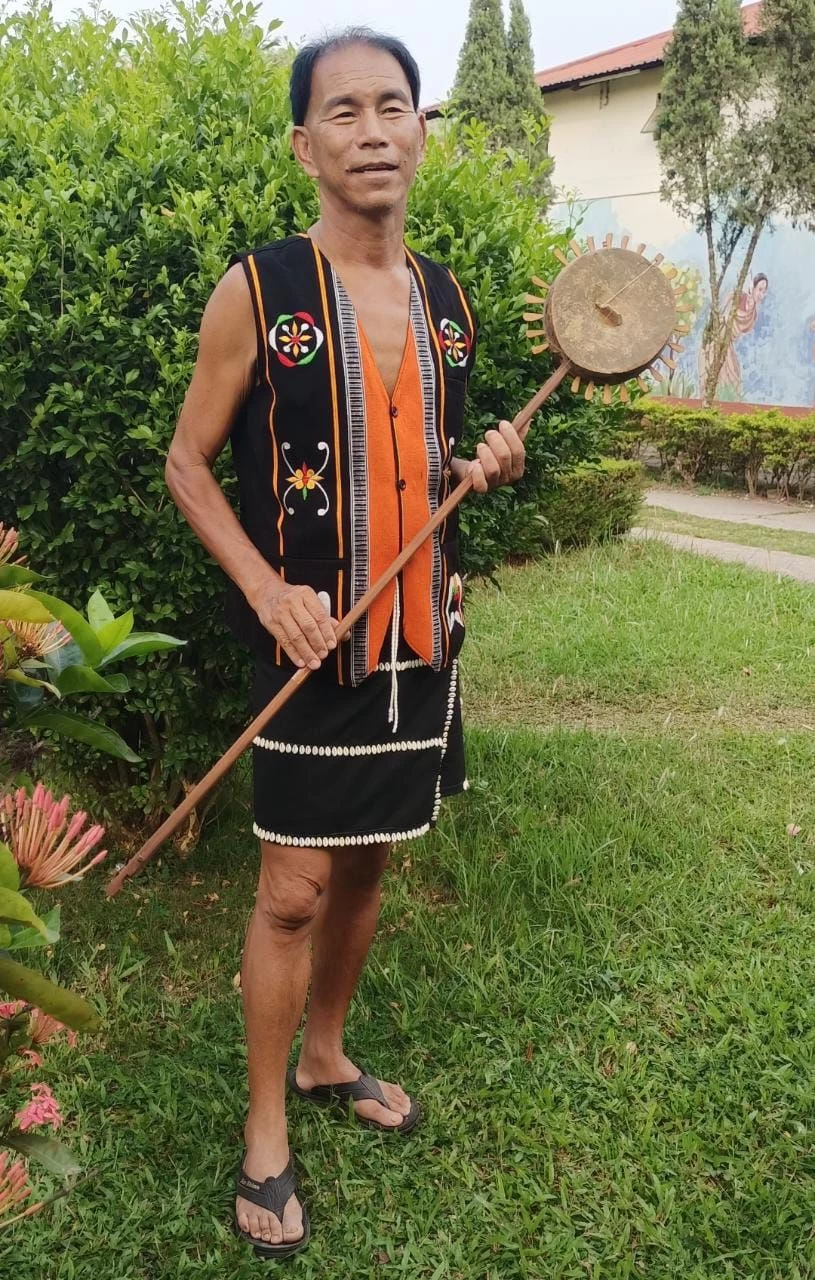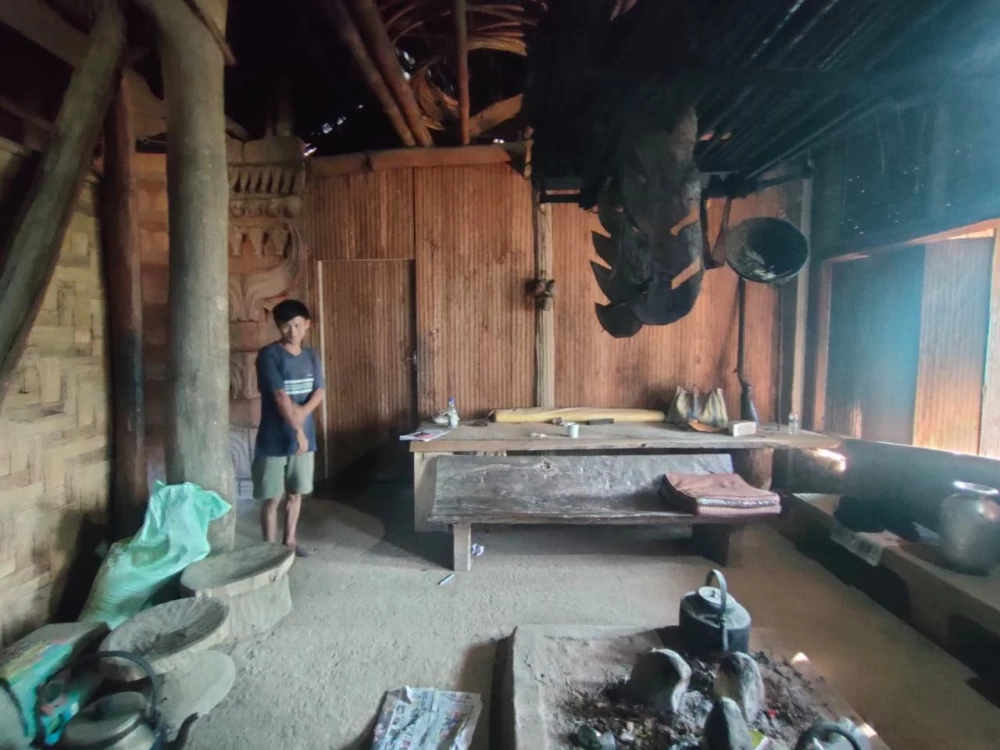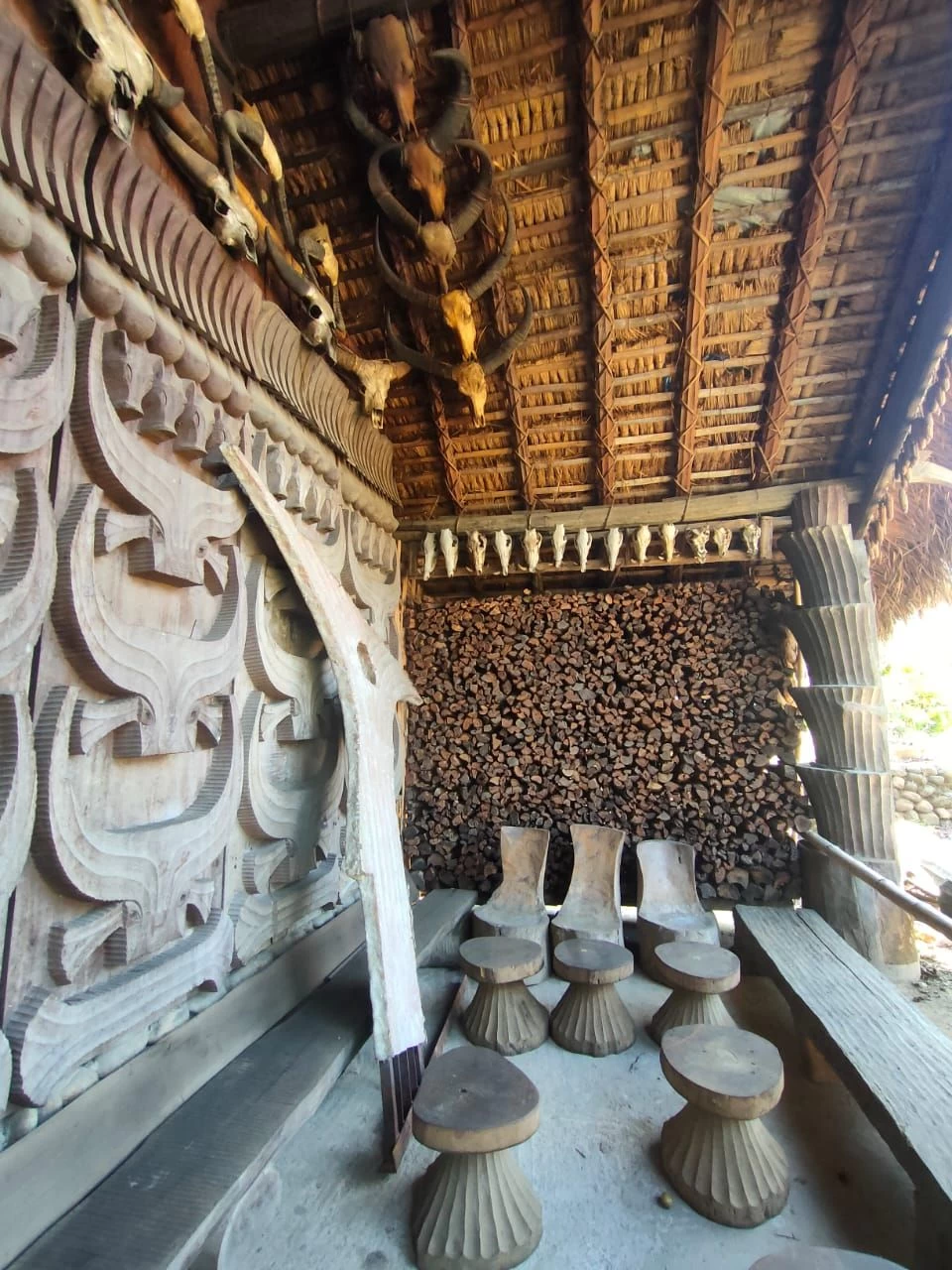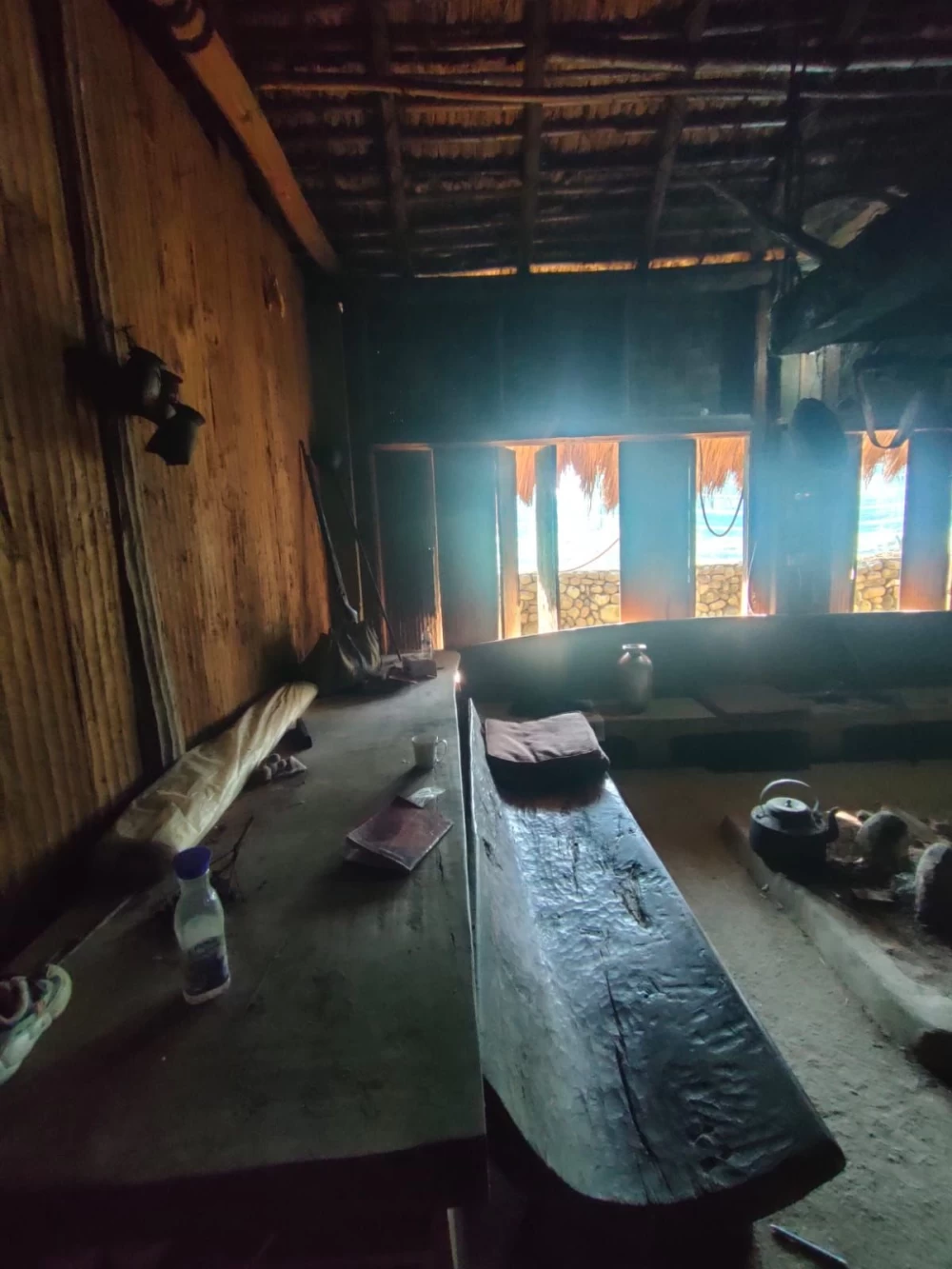Vezwuzo Phesao’s timeless Chakhesang home is a living museum. (Morung Photo)
.jpg)
Imti Longchar
Dimapur | November 14
In the midst of concrete, modern structures, the home of Veswuzo Phesao in Naga United Village, Chümoukedima stands out as a cultural landmark, embodying the essence of traditional Naga architecture.
Constructed in the style of a traditional rich man’s house of the Chakhesang community, also called Kunemeche, the owner built the house using local materials with techniques he had learnt from his father and grandfather.

Breaking away from the monotony of dull, concrete buildings, the house has all the markers that would distinguish it as a traditional Chakhesang Naga home. Besides the thatched roofing, the Chika-chi or Ceka (crossed horn or house with horns) and the front gable with the wood carvings have all the special connotations of carvings and symbolisms, designated to the man who sacrificed his wealth for organizing village feasts.

The front wall is also adorned with carved statues of warriors, Mithun heads, pig heads and women’s breasts all chiseled out in panels made from single timbers- striking a visual narrative of the connection to nature, agriculture, and fertility.
Head skulls of an elephants, buffaloes, and other hunted animals are suspended on the front and sidewalls. Once inside, giant baskets for storing grains known as Khi in Chakhesang, rows of corns, pounding tables, and other important agricultural implements line the entry way. This space then leads to the kitchen replete with the traditional hearth and wooden barrels for making beer.
.webp)
What sets Phesao’s initiative apart is not just the architectural tribute but the lived experience within. It is not just an aesthetic, but a home that shows signs of living, and the wear and tear that comes with it.
.webp)
Currently the officer-in-charge of Shilpgram, NEZCC Guwahati, Phesao said he began the initiative of constructing a rich man’s house in 2003, starting with the wood carvings and designs. This was also the year he led a team in constructing a Chakhesang House of Merit at the Indira Gandhi Rashtriya Manav Sangrahalaya (IGRMS) museum in Bhopal, Madhya Pradesh.

According to a Times of India report, this Kunemechi construction was being considered as one of the most unique huts in India; for the reason that the authentic carved columns cannot be found in any other museum in India except IGRMS.

Integrating modern practices with traditional Naga architecture
As for his construction back at home, recognizing that durability of wooden structures are very low in areas of high humidity and termite infestation like Dimapur or Chümoukedima, Phesao who hails from Chozuba village said he treated the timber and bamboo in water for the duration of one month in order to make them more resilient to environmental damages.
.webp)
“This ‘baptism in water’ not only enhances the durability of the materials for house construction in hot climates but also increases resistance to decay and pests like termites,” he asserted.
For the scaffolding, Phesao ensured that the wooden pillars were not buried directly inside the earth but clamped to a foundation made of cement, iron rod, stone and sand. “Burying wooden pillars directly often leads to accelerated deterioration caused by moisture, fungi and pests. Therefore, I have used cement foundation to elevate and secure the wooden pillars.”
.webp)
Adopting these sustainable practices made the structures more resilient, according to Phesao, except for the crossed-horn which had to be taken down after it somehow deteriorated. “I am now in the process of replicating the wooden structure of the Chika with fiberglass which will be more sustainable, he stated.

A craft passed down through generations
Phesao, who is a recipient of the Governor’s Award for distinction in the field of Arts and Crafts (2006), said the decision to build his home in the traditional style stemmed from his desire to inspire others to embrace their heritage and concerns about the fading legacy of traditional architecture. His family has been residing in the house since 2011.
“I am also an employee of the North East Zone Cultural Centre (NEZCC) which main objective is to promote and preserve our region’s cultural heritage. So, I considered it my bounden duty to carry the torch forward in my own capacity,” Phesao emphasized.
.webp)
Expressing concern that the younger generation are increasingly becoming disinterested in learning the craftsmanship involved in building these traditional houses, Phesao said the artisanship of constructing these houses are at risk of being lost. We urgently need to document it as well as inculcate it with practical training and workshops, he added.
By personally investing in the construction of a rich man’s house, Phesao said he aspired to set an example for others to appreciate and preserve their cultural heritage, even though he was not entitled to reside in such a house if one goes strictly by tradition. He, however, disclosed that in his own capacity he has also given feasts to his community twice following the Christian-Christmas tradition.
Phesao also felt that living in a traditional house, despite certain inconveniences compared to modern constructions, will serve a reminder of the cultural wealth that is at risk of being replaced. “I learnt these skills from my father and grandfather. He underscored that “It’s not just about constructing a house; it’s about carrying forward our legacy.”
Since its completion, international and domestic tourists as well as locals have been frequent visitors to observe the lived-in traditional structure and artefacts housed inside. Phesao also recollected with nostalgia the time late PB Acharya, when he was the Governor of Nagaland visited and expressed his admiration for the architecture while sharing a cup of tea.
This is the fifth and the last report of the five-part series highlighting the experiences and challenges faced by the construction industry in Nagaland as part of the Kohima Press Club & Nagaland Building and Other Construction Workers Welfare Board Media Fellowship 2023.






